Weixuan Chen
Sherman
Can Knowledge Improve Security? A Coding-Enhanced Jamming Approach for Semantic Communication
May 06, 2025Abstract:As semantic communication (SemCom) attracts growing attention as a novel communication paradigm, ensuring the security of transmitted semantic information over open wireless channels has become a critical issue. However, traditional encryption methods often introduce significant additional communication overhead to maintain stability, and conventional learning-based secure SemCom methods typically rely on a channel capacity advantage for the legitimate receiver, which is challenging to guarantee in real-world scenarios. In this paper, we propose a coding-enhanced jamming method that eliminates the need to transmit a secret key by utilizing shared knowledge-potentially part of the training set of the SemCom system-between the legitimate receiver and the transmitter. Specifically, we leverage the shared private knowledge base to generate a set of private digital codebooks in advance using neural network (NN)-based encoders. For each transmission, we encode the transmitted data into digital sequence Y1 and associate Y1 with a sequence randomly picked from the private codebook, denoted as Y2, through superposition coding. Here, Y1 serves as the outer code and Y2 as the inner code. By optimizing the power allocation between the inner and outer codes, the legitimate receiver can reconstruct the transmitted data using successive decoding with the index of Y2 shared, while the eavesdropper' s decoding performance is severely degraded, potentially to the point of random guessing. Experimental results demonstrate that our method achieves comparable security to state-of-the-art approaches while significantly improving the reconstruction performance of the legitimate receiver by more than 1 dB across varying channel signal-to-noise ratios (SNRs) and compression ratios.
Enhancing the Security of Semantic Communication via Knowledge-Aided Coding and Jamming
May 01, 2025Abstract:As semantic communication (SemCom) emerges as a promising communication paradigm, ensuring the security of semantic information over open wireless channels has become crucial. Traditional encryption methods introduce considerable communication overhead, while existing learning-based secure SemCom schemes often rely on a channel capacity advantage for the legitimate receiver, which is challenging to guarantee in practice. In this paper, we propose a coding-enhanced jamming approach that eliminates the need to transmit a secret key by utilizing shared knowledge between the legitimate receiver and the transmitter. We generate private codebooks with neural network (NN)-based encoders, using them to encode data into a sequence Y1, which is then superposed with a sequence Y2 drawn from the private codebook. By optimizing the power allocation between the two sequences, the legitimate receiver can successfully decode the data, while the eavesdropper' s performance is significantly degraded, potentially to the point of random guessing. Experimental results demonstrate that our method achieves comparable security to state-of-the-art approaches while significantly improving the reconstruction performance of the legitimate receiver by more than 1 dB across varying channel signal-to-noise ratios (SNRs) and compression ratios.
Enhancing Privacy in Semantic Communication over Wiretap Channels leveraging Differential Privacy
Apr 23, 2025



Abstract:Semantic communication (SemCom) improves transmission efficiency by focusing on task-relevant information. However, transmitting semantic-rich data over insecure channels introduces privacy risks. This paper proposes a novel SemCom framework that integrates differential privacy (DP) mechanisms to protect sensitive semantic features. This method employs the generative adversarial network (GAN) inversion technique to extract disentangled semantic features and uses neural networks (NNs) to approximate the DP application and removal processes, effectively mitigating the non-invertibility issue of DP. Additionally, an NN-based encryption scheme is introduced to strengthen the security of channel inputs. Simulation results demonstrate that the proposed approach effectively prevents eavesdroppers from reconstructing sensitive information by generating chaotic or fake images, while ensuring high-quality image reconstruction for legitimate users. The system exhibits robust performance across various privacy budgets and channel conditions, achieving an optimal balance between privacy protection and reconstruction fidelity.
A Coding-Enhanced Jamming Approach for Secure Semantic Communication over Wiretap Channels
Apr 23, 2025Abstract:As semantic communication (SemCom) gains increasing attention as a novel communication paradigm, ensuring the security of transmitted semantic information over open wireless channels becomes crucial. Existing secure SemCom solutions often lack explicit control over security. To address this, we propose a coding-enhanced jamming approach for secure SemCom over wiretap channels. This approach integrates deep joint source and channel coding (DeepJSCC) with neural network-based digital modulation, enabling controlled jamming through two-layer superposition coding. The outer constellation sequence encodes the source image, while the inner constellation sequence, derived from a secret image, acts as the jamming signal. By minimizing the mutual information between the outer and inner constellation sequences, the jamming effect is enhanced. The jamming signal is superposed on the outer constellation sequence, preventing the eavesdropper from recovering the source image. The power allocation coefficient (PAC) in the superposition coding can be adjusted to control system security. Experiments show that our approach matches existing methods in security while significantly improving reconstruction performance across varying channel signal-to-noise ratios (SNRs) and compression ratios.
Semantic Communication with Entropy-and-Channel-Adaptive Rate Control
Jan 26, 2025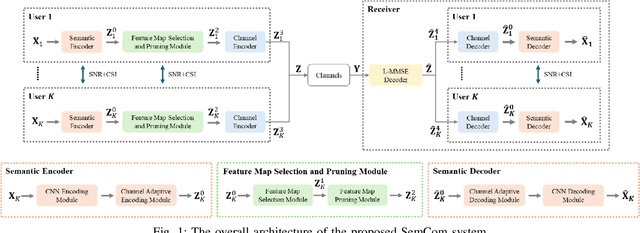
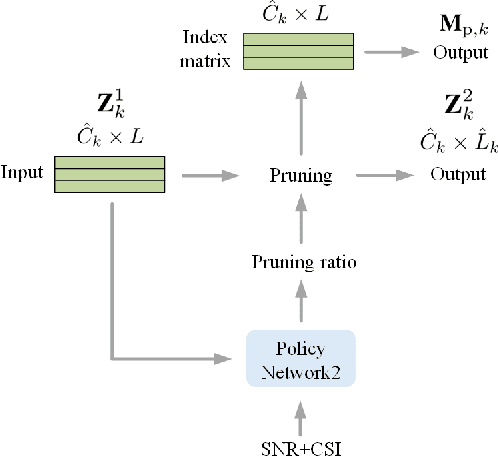
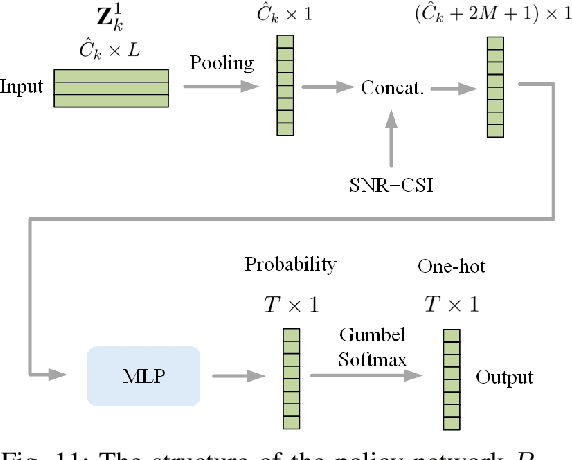
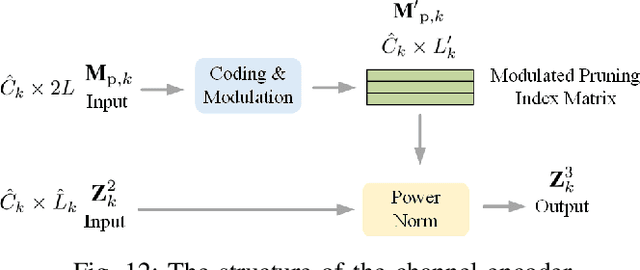
Abstract:Traditional wireless image transmission methods struggle to balance rate efficiency and reconstruction quality under varying channel conditions. To address these challenges, we propose a novel semantic communication (SemCom) system that integrates entropy-aware and channel-adaptive mechanisms for wireless image transmission over multi-user multiple-input multiple-output (MU-MIMO) fading channels. Unlike existing approaches, our system dynamically adjusts transmission rates based on the entropy of feature maps, channel state information (CSI), and signal-to-noise ratio (SNR), ensuring optimal resource utilization and robust performance. The system employs feature map pruning, channel attention, spatial attention, and multihead self-attention (MHSA) mechanisms to prioritize critical semantic features and effectively reconstruct images. Experimental results demonstrate that the proposed system outperforms state-of-the-art benchmarks, including BPG+LDPC+4QAM and Deep JSCC, in terms of rate-distortion performance, flexibility, and robustness, particularly under challenging conditions such as low SNR, imperfect CSI, and inter-user interference. This work establishes a strong foundation for adaptive-rate SemCom systems and highlights their potential for real-time, bandwidthintensive applications.
CASC: Condition-Aware Semantic Communication with Latent Diffusion Models
Nov 10, 2024Abstract:Diffusion-based semantic communication methods have shown significant advantages in image transmission by harnessing the generative power of diffusion models. However, they still face challenges, including generation randomness that leads to distorted reconstructions and high computational costs. To address these issues, we propose CASC, a condition-aware semantic communication framework that incorporates a latent diffusion model (LDM)-based denoiser. The LDM denoiser at the receiver utilizes the received noisy latent codes as the conditioning signal to reconstruct the latent codes, enabling the decoder to accurately recover the source image. By operating in the latent space, the LDM reduces computational complexity compared to traditional diffusion models (DMs). Additionally, we introduce a condition-aware neural network (CAN) that dynamically adjusts the weights in the hidden layers of the LDM based on the conditioning signal. This enables finer control over the generation process, significantly improving the perceptual quality of the reconstructed images. Experimental results show that CASC significantly outperforms DeepJSCC in both perceptual quality and visual effect. Moreover, CASC reduces inference time by 51.7% compared to existing DM-based semantic communication systems, while maintaining comparable perceptual performance. The ablation studies also validate the effectiveness of the CAN module in improving the image reconstruction quality.
Enhancing Image Privacy in Semantic Communication over Wiretap Channels leveraging Differential Privacy
May 15, 2024

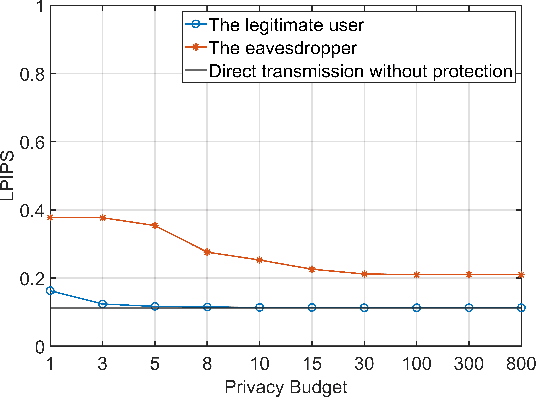
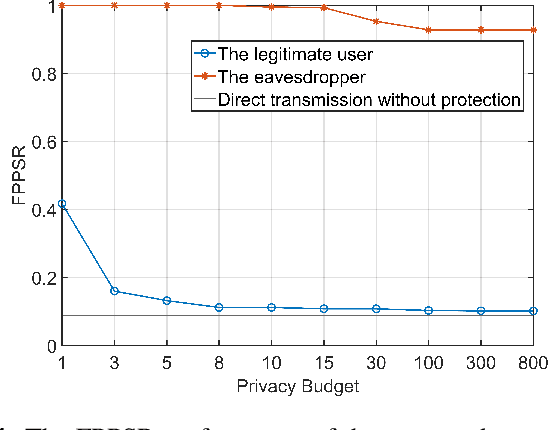
Abstract:Semantic communication (SemCom) enhances transmission efficiency by sending only task-relevant information compared to traditional methods. However, transmitting semantic-rich data over insecure or public channels poses security and privacy risks. This paper addresses the privacy problem of transmitting images over wiretap channels and proposes a novel SemCom approach ensuring privacy through a differential privacy (DP)-based image protection and deprotection mechanism. The method utilizes the GAN inversion technique to extract disentangled semantic features and applies a DP mechanism to protect sensitive features within the extracted semantic information. To address the non-invertibility of DP, we introduce two neural networks to approximate the DP application and removal processes, offering a privacy protection level close to that by the original DP process. Simulation results validate the effectiveness of our method in preventing eavesdroppers from obtaining sensitive information while maintaining high-fidelity image reconstruction at the legitimate receiver.
A Nearly Information Theoretically Secure Approach for Semantic Communications over Wiretap Channel
Jan 25, 2024Abstract:This paper addresses the challenge of achieving information-theoretic security in semantic communication (SeCom) over a wiretap channel, where a legitimate receiver coexists with an eavesdropper experiencing a poorer channel condition. Despite previous efforts to secure SeCom against eavesdroppers, achieving information-theoretic security in such schemes remains an open issue. In this work, we propose a secure digital SeCom approach based on superposition codes, aiming to attain nearly information-theoretic security. Our proposed method involves associating semantic information with satellite constellation points within a double-layered constellation map, where cloud center constellation points are randomly selected. By carefully allocating power between these two layers of constellation, we ensure that the symbol error probability (SEP) of the eavesdropper decoding satellite constellation points is nearly equivalent to random guessing, while maintaining a low SEP for the legitimate receiver to successfully decode the semantic information. Simulation results showcase that the Peak Signal-to-Noise Ratio (PSNR) and Mean Squared Error (MSE) for the eavesdropper's reconstructed data, using our proposed method, can range from decoding Gaussian-distributed random noise to approaching the variance of the data. This validates the ability of our method to achieve nearly information-theoretic security, demonstrating superior data security compared to benchmark methods.
Deep Joint Source-Channel Coding for Wireless Image Transmission with Entropy-Aware Adaptive Rate Control
Jun 05, 2023Abstract:Adaptive rate control for deep joint source and channel coding (JSCC) is considered as an effective approach to transmit sufficient information in scenarios with limited communication resources. We propose a deep JSCC scheme for wireless image transmission with entropy-aware adaptive rate control, using a single deep neural network to support multiple rates and automatically adjust the rate based on the feature maps of the input image, their entropy, and the channel condition. In particular, we maximize the entropy of the feature maps to increase the average information carried by each symbol transmitted into the channel during the training. We further decide which feature maps should be activated based on their entropy, which improves the efficiency of the transmitted symbols. We also propose a pruning module to remove less important pixels in the activated feature maps in order to further improve transmission efficiency. The experimental results demonstrate that our proposed scheme learns an effective rate control strategy that reduces the required channel bandwidth while preserving the quality of the received images.
Neural Mesh Refiner for 6-DoF Pose Estimation
Mar 26, 2020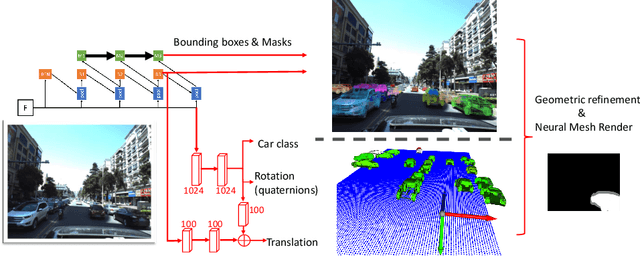
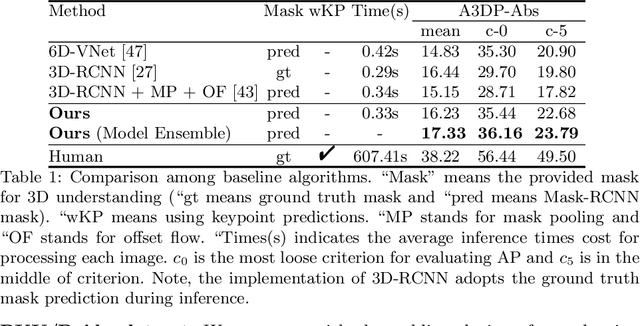
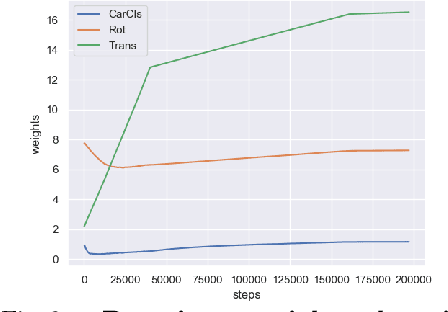
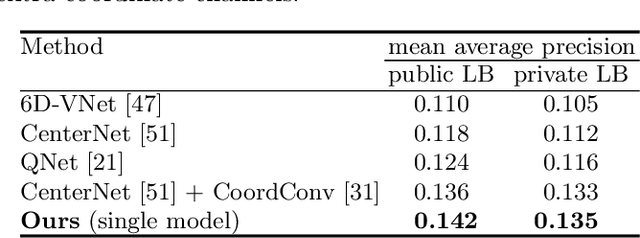
Abstract:How can we effectively utilise the 2D monocular image information for recovering the 6D pose (6-DoF) of the visual objects? Deep learning has shown to be effective for robust and real-time monocular pose estimation. Oftentimes, the network learns to regress the 6-DoF pose using a naive loss function. However, due to a lack of geometrical scene understanding from the directly regressed pose estimation, there are misalignments between the rendered mesh from the 3D object and the 2D instance segmentation result, e.g., bounding boxes and masks prediction. This paper bridges the gap between 2D mask generation and 3D location prediction via a differentiable neural mesh renderer. We utilise the overlay between the accurate mask prediction and less accurate mesh prediction to iteratively optimise the direct regressed 6D pose information with a focus on translation estimation. By leveraging geometry, we demonstrate that our technique significantly improves direct regression performance on the difficult task of translation estimation and achieve the state of the art results on Peking University/Baidu - Autonomous Driving dataset and the ApolloScape 3D Car Instance dataset. The code can be found at \url{https://bit.ly/2IRihfU}.
 Add to Chrome
Add to Chrome Add to Firefox
Add to Firefox Add to Edge
Add to Edge